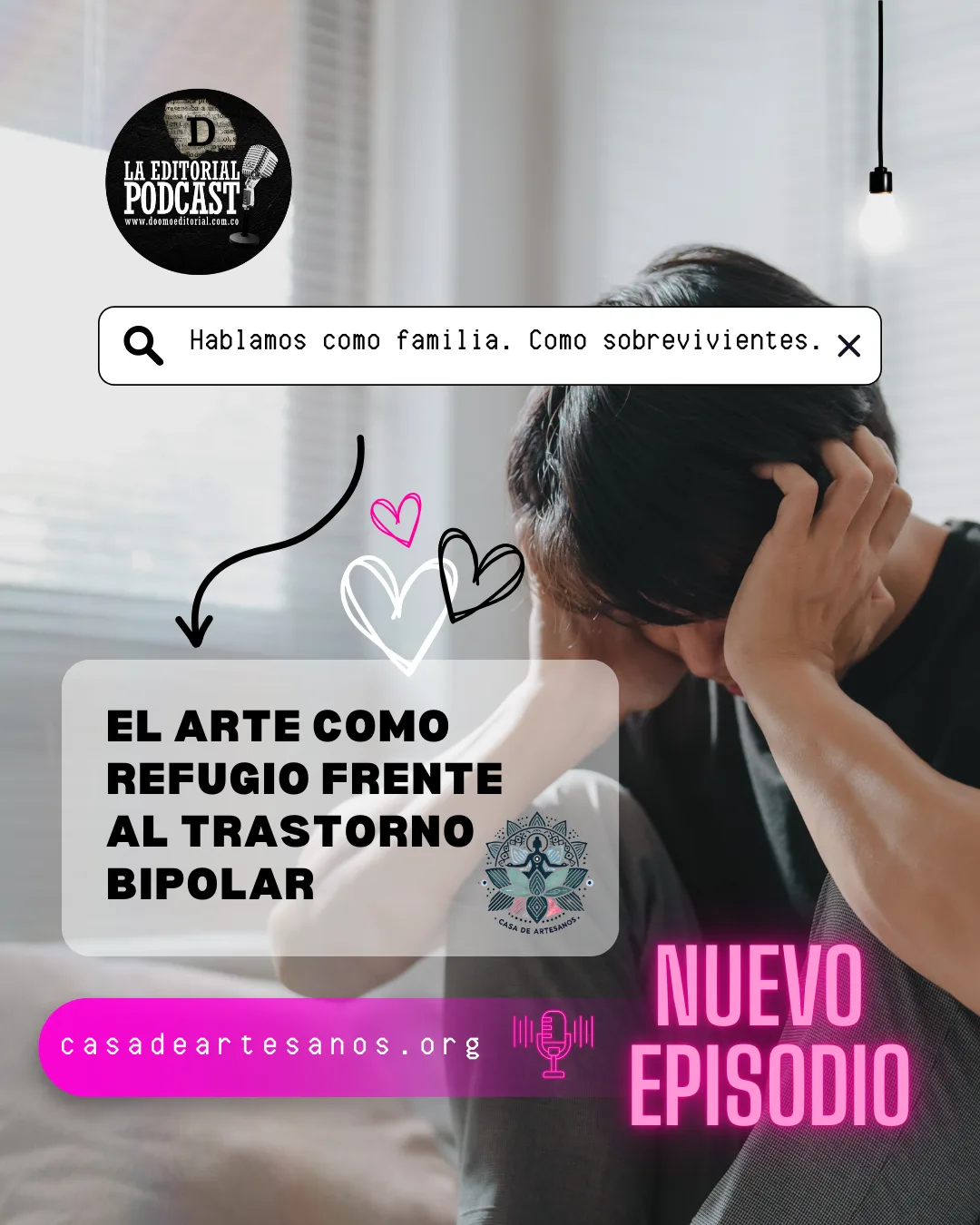On the streets, on television, among friends, and even in romantic relationships, it was synonymous with emotional instability.
On the streets, on television, among friends, and even in romantic relationships, it was synonymous with emotional instability.

For 29 years, I lived in Colombia hearing the word “bipolar” used as a joke. On the streets, on television, among friends, and even in romantic relationships, it was synonymous with emotional instability. Several of my past partners claimed to be “bipolar” as an excuse for mood swings or emotional irresponsibility. In hindsight, I acknowledge my ignorance—perhaps due to my age, my culture, or simply a profound disconnection from the reality of mental health.
I met my husband long before the pandemic. He had been diagnosed with bipolar II disorder more than fifteen years earlier, but we never discussed it during our courtship. When the crisis came, we were already married and expecting our third child, after losing two babies. I was going through severe postpartum depression; he was experiencing a silent relapse. There were no mental health professionals available. No system. Just us, in ruins.
My husband, a brilliant software engineer, was swallowed by a system that does not recognize mental health as a right. Hoping for help, I called the police. He was arrested. We were forbidden to speak. He spent three months in custody without treatment. And I—without English, without a support network, without understanding how anything worked—was completely adrift. Until a group of women—from various cultures—became my lifeline. They taught me that systems collapse, but a conscious, organized community can save you.
Bipolar II disorder is not an exaggeration. It is a complex medical condition, marked by severe depressive episodes and periods of hypomania—excessive energy, insomnia, impulsivity. It is not a “bad temper” but a chemical imbalance that requires diagnosis and treatment. When someone experiences frequent and intense mood swings, what they need is clinical attention—not social judgment. This form of bipolarity is harder to detect because hypomanic phases don’t usually escalate to psychosis, yet they deeply impact daily functioning, relationships, and emotional stability.
Diagnosis, however, is only the beginning. The environment must also evolve. And this is where machismo becomes a structural barrier. That mandate of masculinity that forbids men from saying “I feel unwell,” “I can’t,” “I need help.” The one that sabotages their ability to ask for support and turns vulnerability into shame. Mental health continues to be seen as weakness in those raised to endure without speaking.
If men do not acknowledge their fragility, if they do not engage in their healing process, women cannot carry it all—the pain, the family, the entire emotional system. When machismo denies the core issue, the weight falls entirely on women. And it’s unsustainable. Mental health is a shared responsibility. In times of crisis, staying afloat cannot be a solo endeavor.
And through it all, we learned that accompanying someone with bipolar II is not a solitary task. Diagnosis is just the beginning: it takes support networks, awareness, and structure to sustain the journey. When the system collapsed, we organized ourselves. A group of women—some from my culture, others from different backgrounds—built our own system. Together, we found resources, navigated the institutions, helped me learn English, and guided me through the legal
and emotional maze we were in. These women showed me that the problem is not always the system itself, but how we respond to its failure. Sometimes, the alternative systems born from pain are the most human, effective, and transformative.
Art became our parallel medicine. Creating with our hands when words were not enough. Finding meaning in poetry, in color, in cardboard. Art saved us because it helped us reconnect—with ourselves, with each other, with the world. And with something we had lost: hope. What we couldn’t explain, we shaped. What hurt, we painted. What burned, we turned
into words and color.
After everything—the losses, the pandemic, the detention, the depression, institutional violence, and the migration grief—we had to start over. We moved to a quieter place, closer to nature. We needed space to breathe. To live with less noise and more meaning. Changing our surroundings became part of our healing. We learned that surviving is not enough; we must find places where we can also grow.
Today, I know not all stories end well, but many can begin again. For that, we need timely diagnoses, real networks, empathetic environments, and above all, willpower. Because if the system won’t change, we must change the way we show up for each other.
Dedicated to Dominic Cabral, for his willpower, for his perseverance in the path of healing, and for teaching us that true love is also resistance.
Special thanks to the tribe of women who, with wisdom, compassion, and commitment, have been a source of strength, a bridge, and a guiding light over the last six years. This text is also theirs.